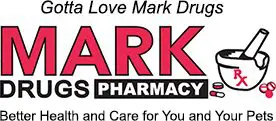Naltrexone 50 mg is a medication approved in the 1980s for the treatment of opium and heroin addiction. Today, Naltrexone is also indicated for alcohol dependence.
Drugs such as heroin bind to opioid receptors. Naltrexone takes the place of heroin on the opioid receptor, inhibiting the effect of heroin on the body (e., naltrexone is an opioid antagonist). Learn more about low-dose naltrexone and autoimmune disease.
Opioid receptors are present in every body tissue and every cell in the body's immune system.
Drugs are not the only ones that can bind to these opioid receptors. The brain and adrenal glands produce opioid hormones called beta-endorphins and enkephalins. These opioid hormones can bind to opioid receptors as well.
A deficiency in opioid hormones (e., endorphins) can trigger cancers and autoimmune disorders, as these hormones serve as immunomodulators.
Naltrexone, when taken in a very low dose every night at bedtime, provides a brief blockade of opioid receptors between 2 am and 4 am. This blockade leads to an increase in the secretion of endogenous endorphins, an increase in the number of receptors, and an increase in the sensitivity of receptors, which ultimately halts disease progression, as it enhances the immune system, initiating a stronger natural body response.
Clinical practice has proven the efficacy of LDN. Dr. Bernard Bihari, a New York City physician, had seen the effects of low-dose naltrexone in his clinical practice. In 1985, he determined that low-dose naltrexone every night at bedtime improved a patient's physiological response to HIV. In the mid-1990s, he found that patients with cancer could also benefit drastically from this treatment, along with patients who have autoimmune diseases such as lupus.
Research has also proven the efficacy of LDN. Dr. Jill Smith, professor of gastroenterology at Pennsylvania State University College of Medicine, published an article in January 2007 in the American Journal of Gastroenterology, concluding that "LDN therapy appears effective and safe in subjects with active Crohn's disease."
